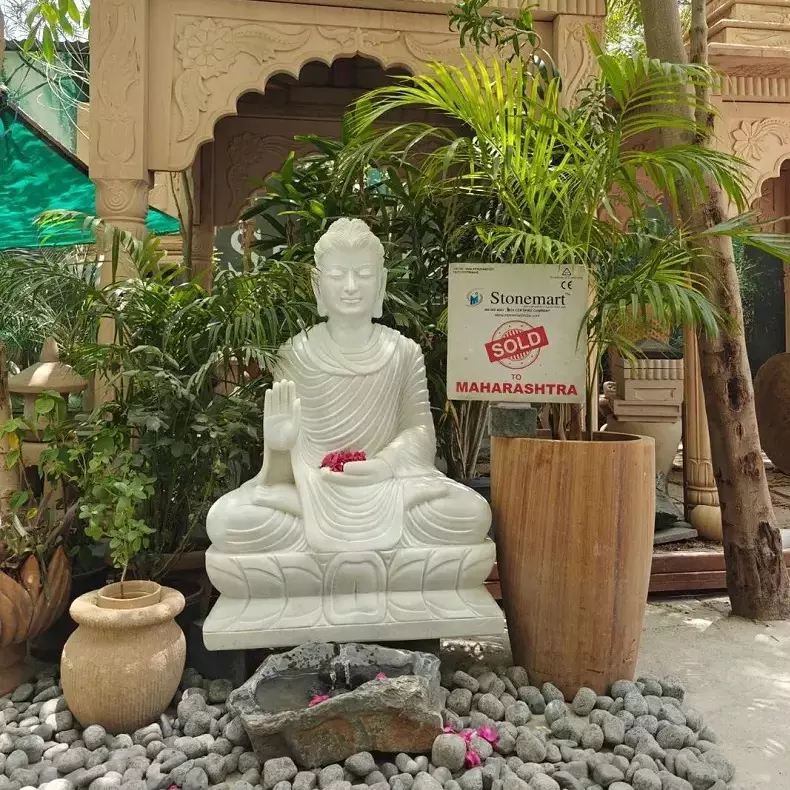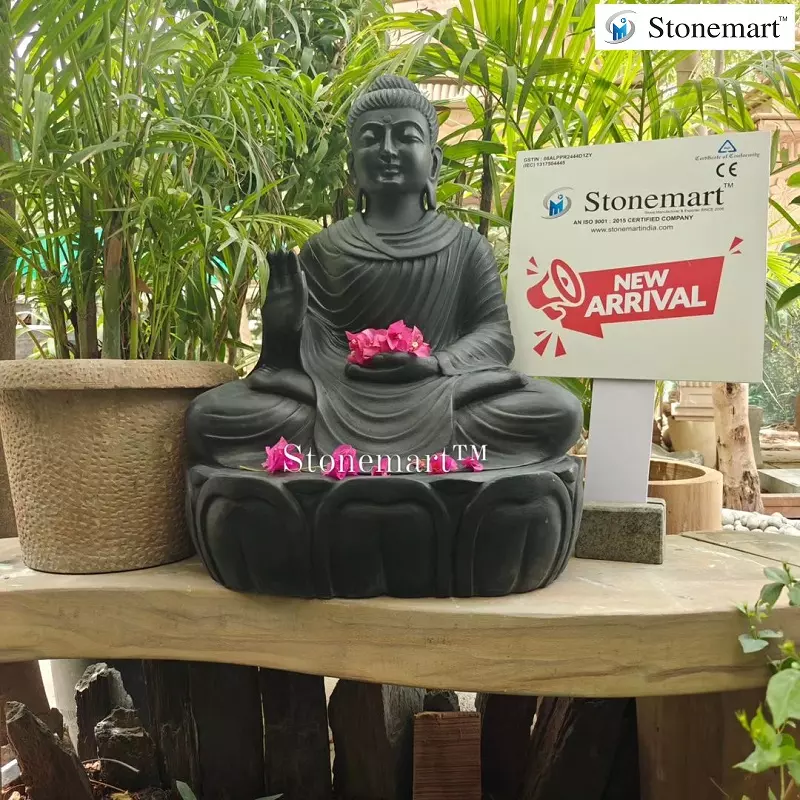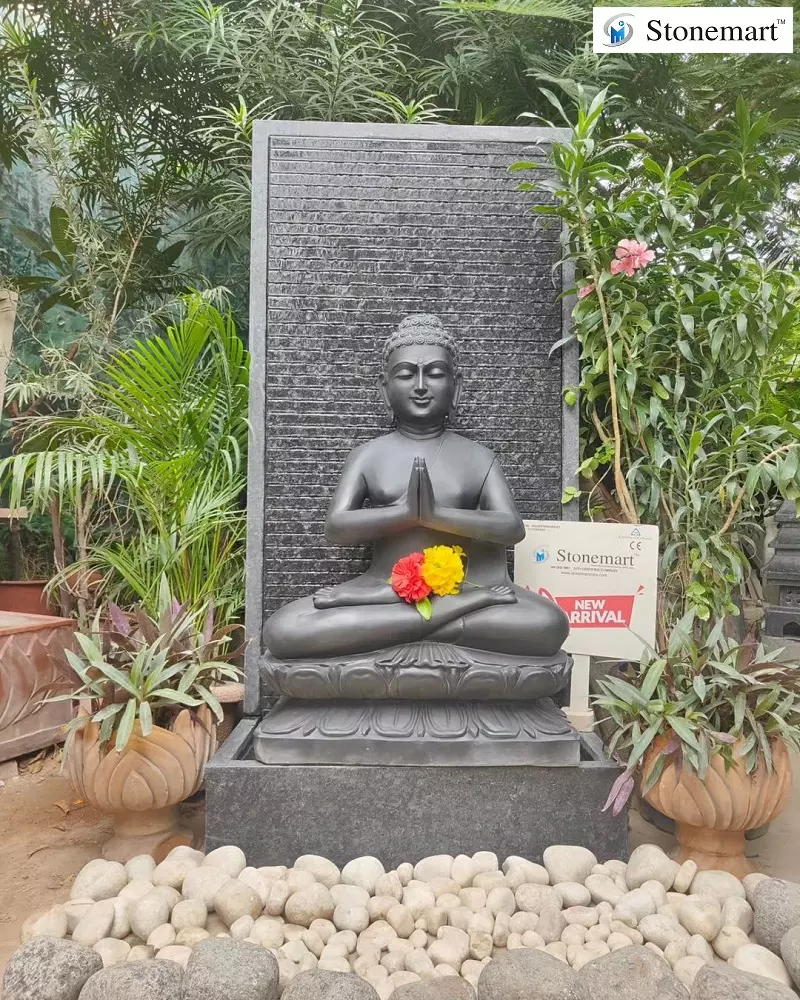What is the Difference Between an Abhaya Mudra Buddha and an Anjali Mudra Buddha Statue?

When we delve deep into the study of different mudras of the Buddha, then we would find that they are not mere gestures but symbolizing different important meanings of life. Whether we speak in terms of the gesture of fearlessness known as abhaya mudra of the Buddha or the welcoming namaskar mudra known as anjali mudra of the Buddha.
If we redefine these mudras in terms of the present modern context then we would find that these mudras play a very significant role in influencing the lives of the people. That is the reason why, it is very important to get Buddha statues in the above mentioned mudras to impact the lives of everyone around them in a good way. For instance, for an individual suffering from fear, anxiety and lack of confidence, the presence of an abhaya mudra Buddha statue can bless the person with a positive aura. While the presence of an anjali mudra Buddha statue would help the people in front to feel like belonging to the place and indeed welcomed to the heart.

MUST READ: What is the Difference Between a Bhumisparsha Mudra Buddha Statue and an Anjali Mudra Buddha Statue?
Yet, there are plethora of distinctions between an abhay mudra Buddha idol and an anjali mudra Buddha idol that are pivotal to understand before purchasing a particular Buddha statue in a specific mudra. Let us crystal clear our thoughts on the grounds of the distinctions segregated in the table below -
| Criterion | Abhaya Mudra Buddha Statue | Anjali Mudra Buddha Statue |
|---|---|---|
| Origin | The origin of abhaya mudra is associated with the fifth dhyani Buddha and performed by Amoghasiddhi. It was first portrayed by the Buddha in front of a mad elephant named Nalagiri appointed by Buddha’s cousin Devdatta to kill him. | Performed by the Buddha during his nomadic journey from one place to another and practiced in front of new people and new places to welcome their presence in the heart. |
| Appearance | Performed by the Buddha by raising the right hand to the chest level and opening the palm with the fingers raised upwards. The left hand stays neatly placed on the lap with the head staying upright with the expressions of calmness and confidence on the face. | The namaste mudra of the Buddha statue features a pleasing smile on the face. The palms of both the hands are joined together in namaskar mudra with the hand raised to the center of the chest level. It is usually portrayed as a sitting Buddha statue. |
| Vastu and Feng Shui Effects | Its placement dispel fear, negative energies, anxieties from the life and fill it with fearlessness, positive energy, and confidence. | It creates a happy, positive and welcoming aura for the person arriving at the vicinity. It creates a sense of belonging to the person or guest arriving and help people connect with each other. |
| Placement | Place this fearless Buddha statue preferably at the entrance or in the living room to safeguard the area against the negative energies and evil spirits. | Place this anjali mudra Buddha sculpture at the home and garden, the console at your living room as well as the entrance or the reception area of your commercial property. |
MUST READ: What is the Difference Between a Vitarka Mudra Buddha Statue and an Anjali Mudra Buddha Statue?

We hope that the table drawn above has given us enough clarity of thought to categorize between a namaskar mudra Buddha statue and a blessing Buddha statue. You can place the order for a Buddha sculpture according to your set prerequisites. Always explore and shop for the Buddha statue that is hand carved out of pure natural stone like granite, marble and sandstone. They are free of impurities and considered best in terms of Vastu as well as Feng shui placements. Pick your favorite from a plethora of collections in Buddha fountains, white marble Buddha statues, black marble Buddha statues, sandstone Buddha statues in any of the two above discussed mudras.
Place your order online for natural stone 2 feet Buddha statue, natural stone 3 feet Buddha statue, natural stone 4 feet Buddha statue, natural stone 5 feet Buddha statue out of a premium range of 100% genuine ISO 9001:2015 and CE Certified collection of the Buddha Ji statues. Reach Stonemart™ India and witness what the most accomplished Indian artisans have hand carved for you!
